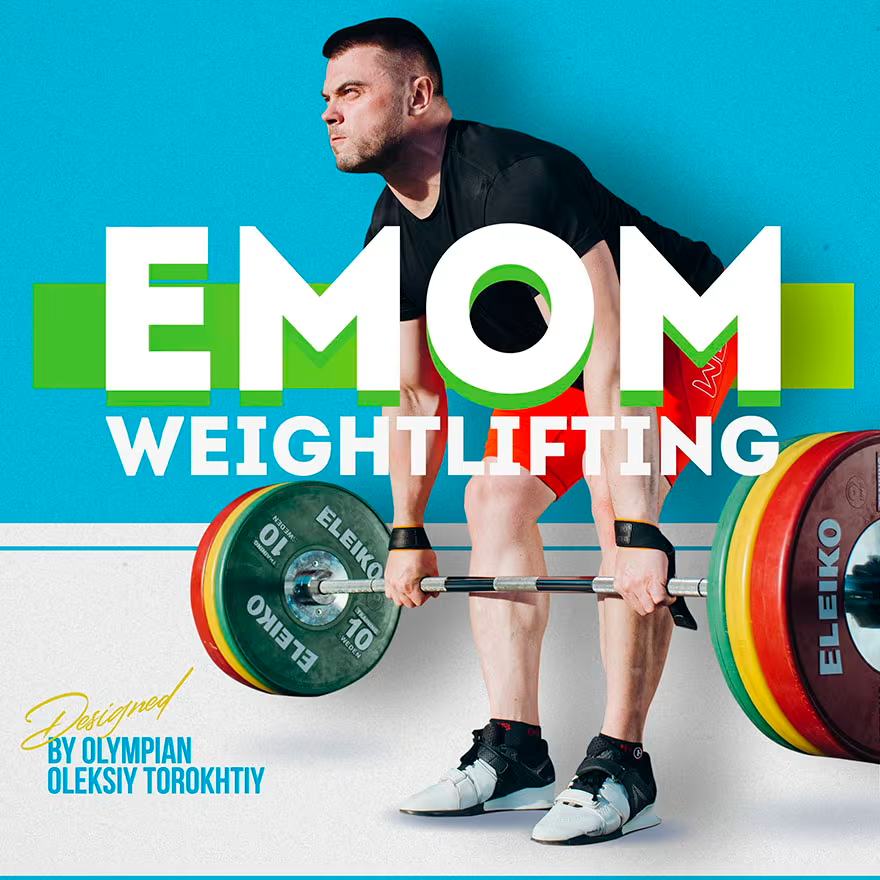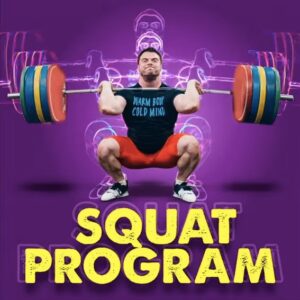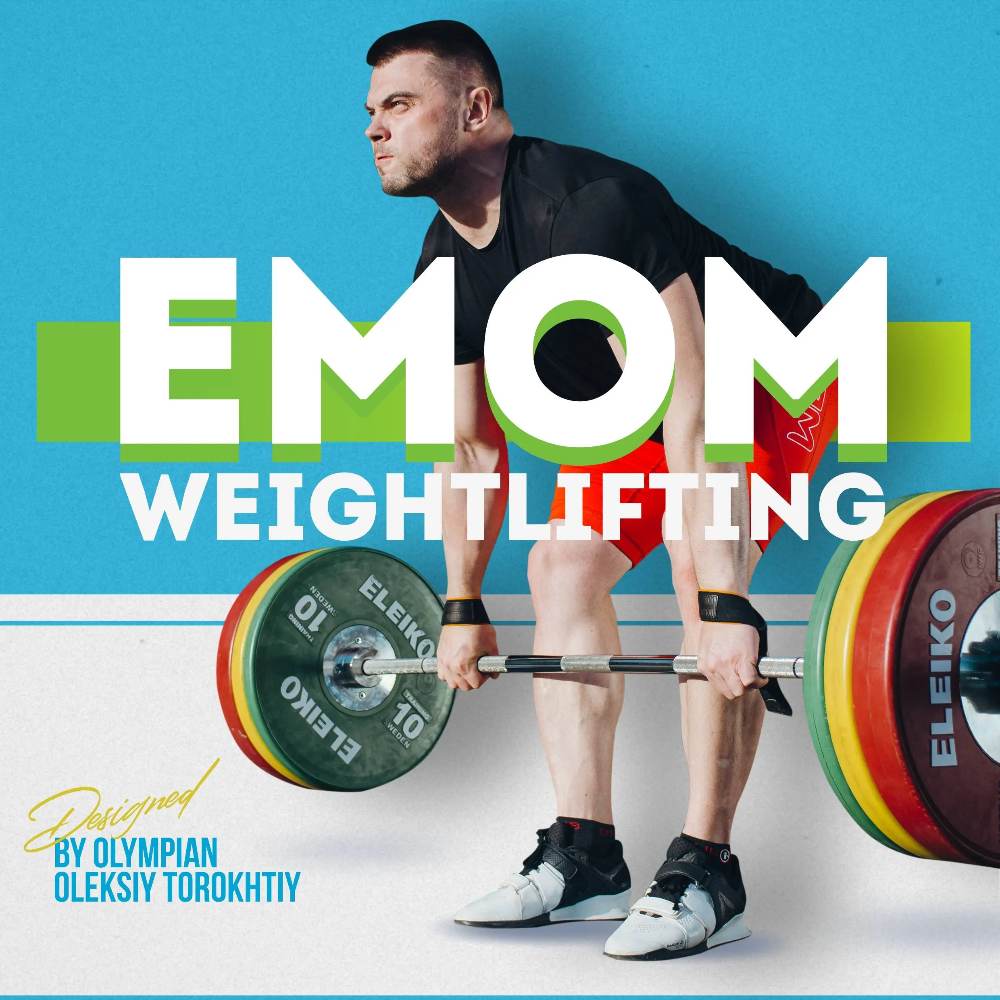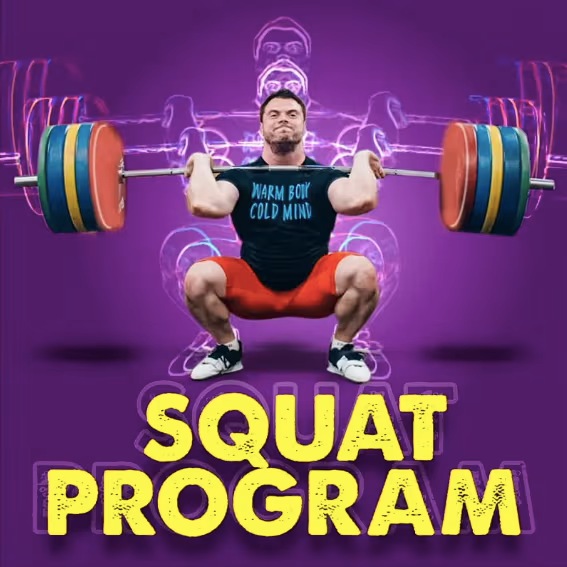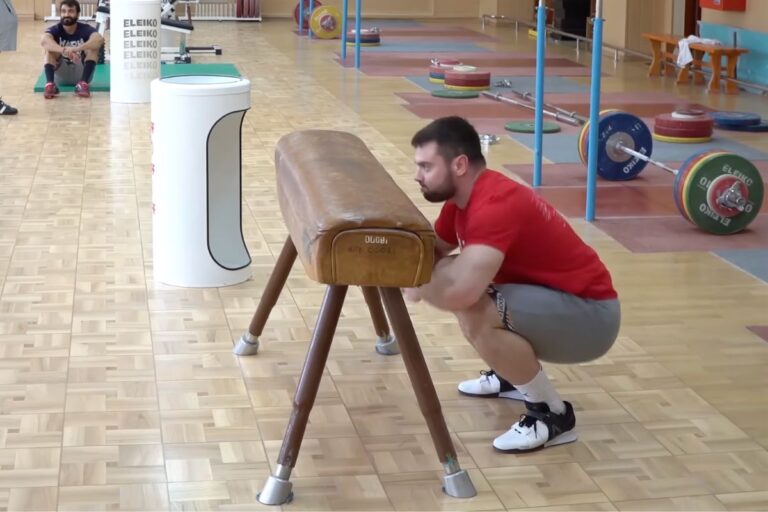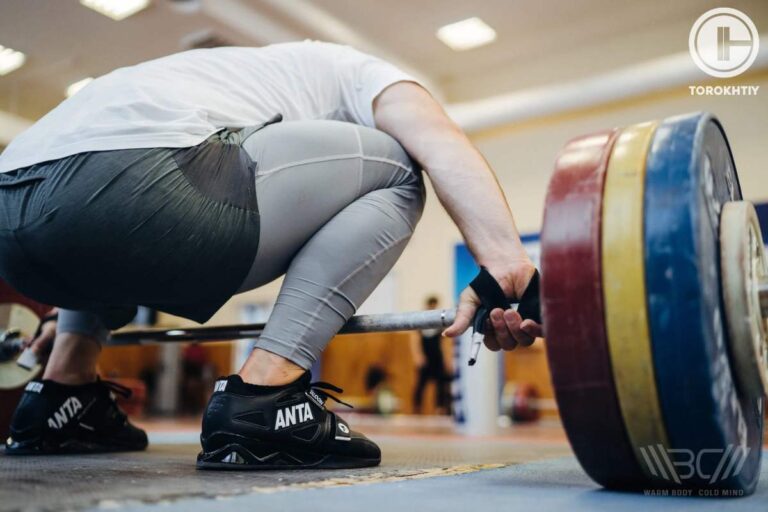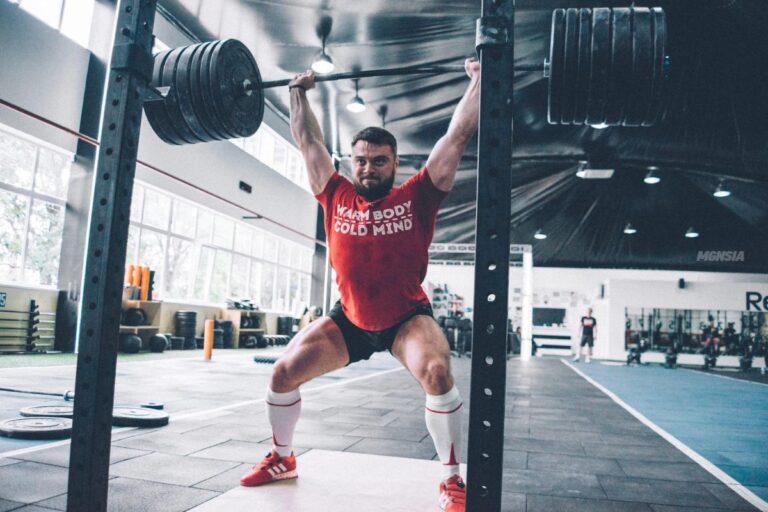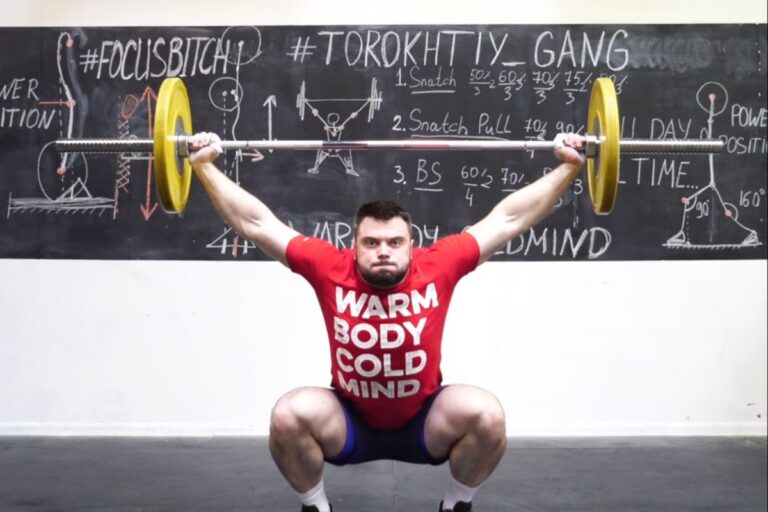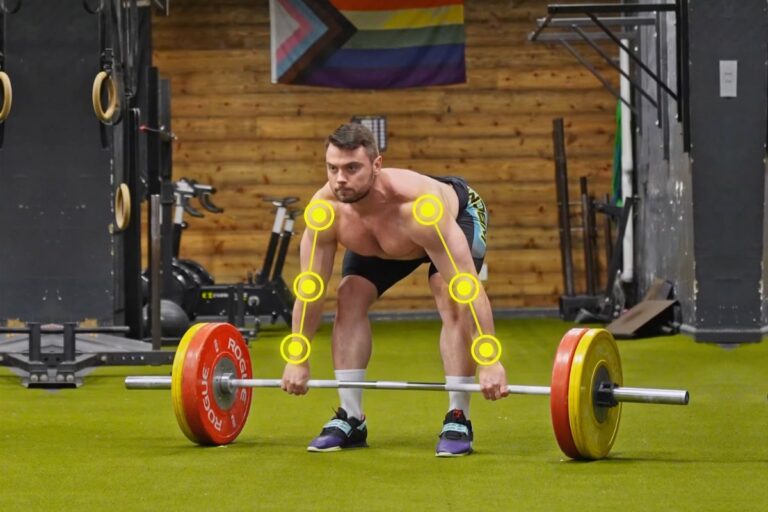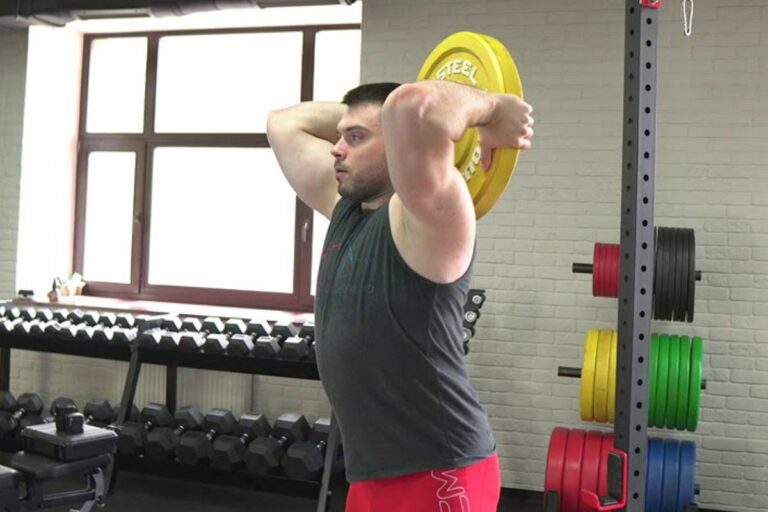Snatch High Pull
The snatch high pull is one of the Olympic weightlifting assistance exercises. Its structure is quite similar to the basic snatch pull but at the same time, it provides plenty of additional load for the upper limb muscles.
There are also some variations of high snatch pull. Let’s find out why weightlifters, fitness, and other athletes should put this exercise on their training plan.
🔻Find Your Best Training: Take Our Quiz!
Are you ready to learn and grow? Take our simple quiz to discover the right training program for you. Let us help you succeed — click below to start the quiz!
The Technique And Mechanics Of Snatch-Grip High Pull
The Snatch high pulls and the ordinary snatch pull techniques are rather the same. There are only 2 differences – more involved arms and full body extension.
Set up the standard starting position, keep your shoulders over the barbell, and drive it off the platform with your legs powerfully. During the first and the second pull, make sure to maintain the balance in the middle of your feet and keep the angles – your shoulders must be over the bar. You should accelerate the barbell throughout the whole upward movement and also keep it as close to the body as possible. You may even touch your legs with it during these phases.
In the full-extension phase of snatch grip high pull, an athlete needs to maintain the balance while keeping their shoulders slightly over the bar. In order to move the barbell closer to the body, one should point their elbows upwards and sideways. The powerful knee and hip joint extension makes an athlete come up on their toes in the second pull. At this stage, you should concentrate to reach the highest barbell position.
The point of the whole exercise is to move your elbows as high as possible. In other words, while performing high pull, you should pay attention to the elbows movement rather than to the barbell height. Even though heavy weights may stop you from lifting the elbows very high, you should try your best.
Why do you need Olympic high pull?
This exercise is actually a multifunctional and helpful tool for professional weightlifters, cfitness, and even basketball and American football players. Snatch grip high pull trains your speed, power, and strength, improves coordination and posture. It helps to work on a full extension in the second pull as well as the ordinary snatch pull does but also improves arm strength and involvement before the turnover.
Additionally, barbell high pull aims to boost the force and power of the vertical extension in the snatch. Beginners also can perform snatch grip high pulls using light weights in order to learn how to redirect efforts from legs to arms.
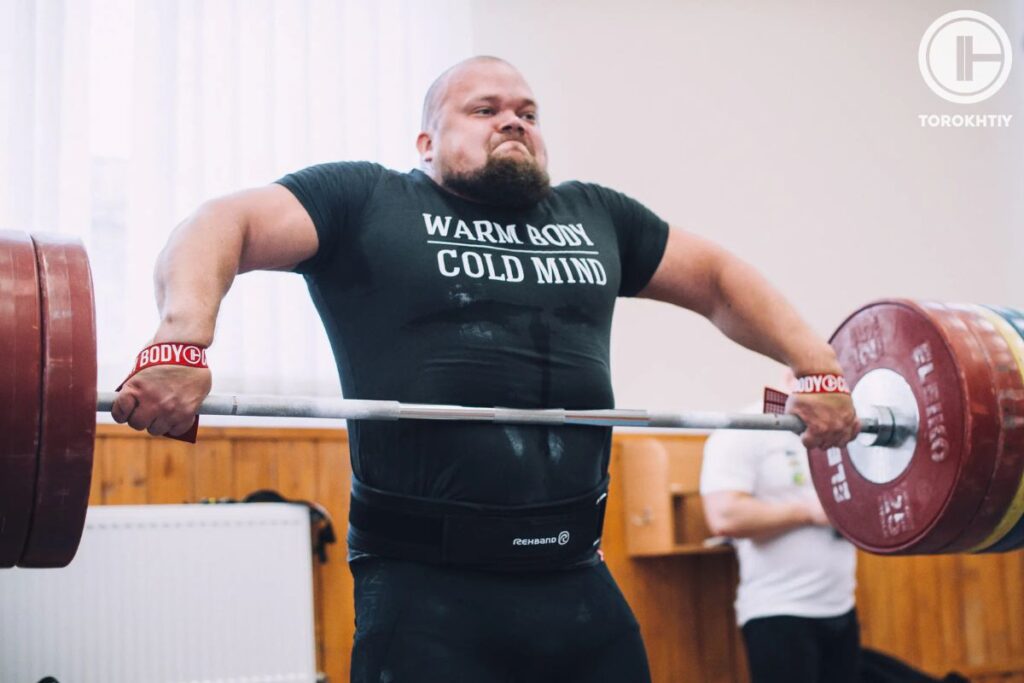
What loads should you choose and when should you use barbell high pull?
As it is supposed to be done with the highest speed for explosive strength training, you should perform 2-6 reps and vary weights from the lowest (an empty barbell) up to 85%. I do not recommend overloading the bar because it becomes hard to speed it up and lift the elbows high enough.
As the high pull workout aims to improve explosive strength, it is worth including it in the training plan after the main snatch exercise before the squats. You can also benefit from using it with light weights during a warm-up to work on technique and set up the right “angles”.
What variations of the snatch high-pull are possible and what do high pulls work ?
You can experiment with starting positions of the snatch high-pull just for a change or in order to reach different goals.
1. The deficit snatch high-pull
An extended range of motion makes you “stand” the pull for a slightly longer time and improves acceleration skills. This exercise is crucial for athletes with a weak lower back who struggle to drive a bar off the platform or simply lack the strength and power to accelerate in the first pull.
The deficit variation toughens all muscles at the back of a body, especially legs and the lower back, improves the quality of efforts, and fixes the starting position. It is better to use this exercise during the preparation period when athletes are accruing resources to show a new result.
However, you should always remember that the recovery period after the deficit pulls is much longer than after the usual ones. As to the working loads, an athlete should be able to perform the exercise with the normal biomechanics and maintain high speed throughout the motion. In case you can’t perform it correctly in terms of technique, make sure to reduce the load, otherwise, there is little use doing it.
It is also important to know that athletes with low mobility and flexibility might have a hard time setting up the right and safe starting position. In this case. a coach and an athlete should figure out whether it is possible to work this way. If yes, you can vary the height of a plate.
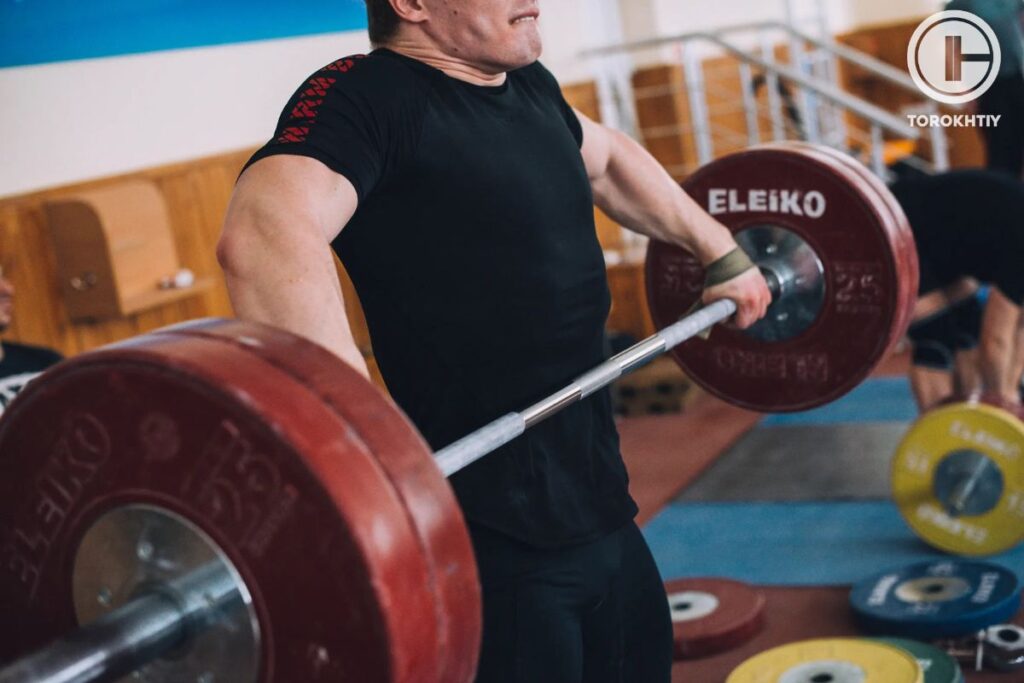
2. From blocks
A shorter range of motion allows you to fully concentrate on the quality of the second pull. It also makes it possible to involve arms even more and work on pointing elbows straightly upwards. It mainly benefits particular pull phases, especially the extension in the snatch and clean exercises.
By the way, always mind the safety while using blocks. In case an athlete isn’t attentive enough while lowering a barbell, it may fall on the edge of a block and bounce off anywhere causing damage or even injuries. Therefore, I recommend lowering the bar carefully.
3. From one block
This exercise has a short range of motion too but a block is placed between your legs. It creates slight barbell oscillations and thus helps an athlete maintain higher velocity and dynamics. It increases the training intensity as well as improves coordination and speed.
4. With straps
It is a really helpful tool to eliminate distractions when you need to give full attention to a particular technical element. For instance, when you have to develop the highest possible speed performing 6 reps or work on pointing the elbows upwards, straps take care of the power and quality of a grip preventing forearms from tiring.
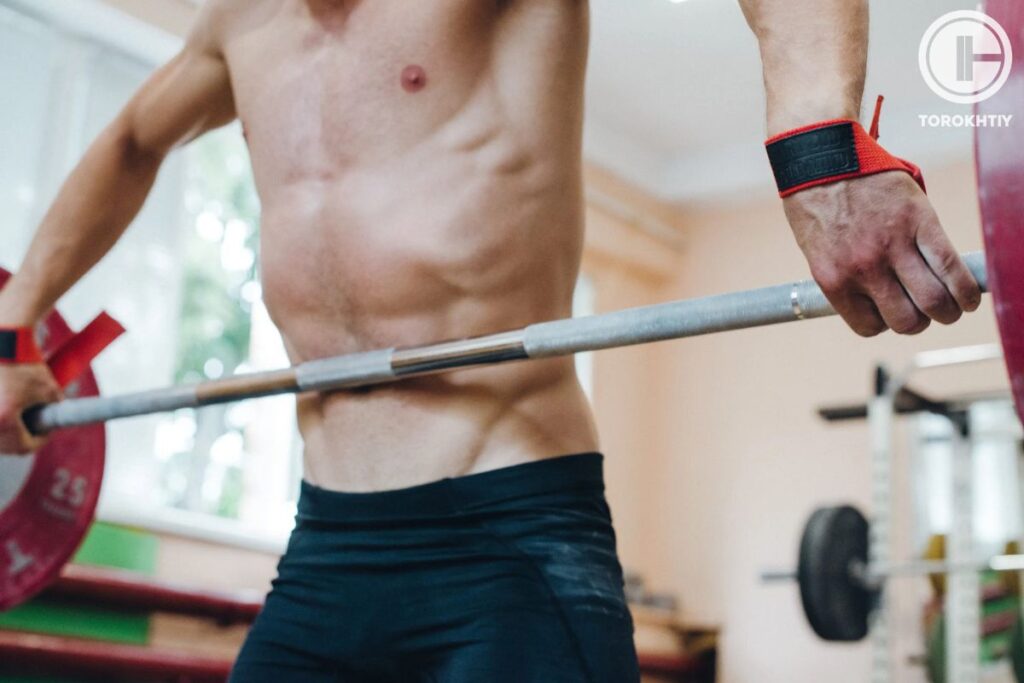
5. Without straps
Feeling the barbell dynamics is essential during the competition period. Therefore, high pull olympic lift (both snatch and clean) may be performed without straps. It allows you to work on the initial phases and doesn’t overstrain shoulders that also need a good regular rest to recover from vertical loads.
6. With a pause
I would rather call this variation high pull fitness as many functional athletes have a “sin” of overshrugging shoulders backwards and overextension in the second pull. While working on technique in the snatch high-pull, a 2-3-second pause at the knee level allows you to feel the feet balance, fix the legs and back positions, and relax the arms in order to speed up a barbell and do your best in the second pull.
7. The flat-footed variation
Any flat-footed pull is a coordination challenge even for top athletes. Holding tight throughout the whole range of motion while staying flat-footed is a sign of perfect muscle control and mastery. This exercise is especially helpful for those athletes who tend to rise up on their toes too soon or lose balance in the pull.
I recommend using 40-50% load for this exercise and performing it with a short range of motion: from one or two blocks or a high hang position. For implementing this skill in completion exercises, you can also perform a set of the flat-footed snatch high-pull and high snatch (i. e. the power snatch).
8. With slow lowering
Eccentric exercises are always beneficial: firstly, they boost TUT; secondly, improve technique and angles; thirdly, develop coordination due to the switch between a powerful upward movement and a slow downward one; fourthly, eccentric work strengthens back and legs muscles; and, finally, they train patience which is also extremely important.
As you can see, even the high-pull has plenty of variations.
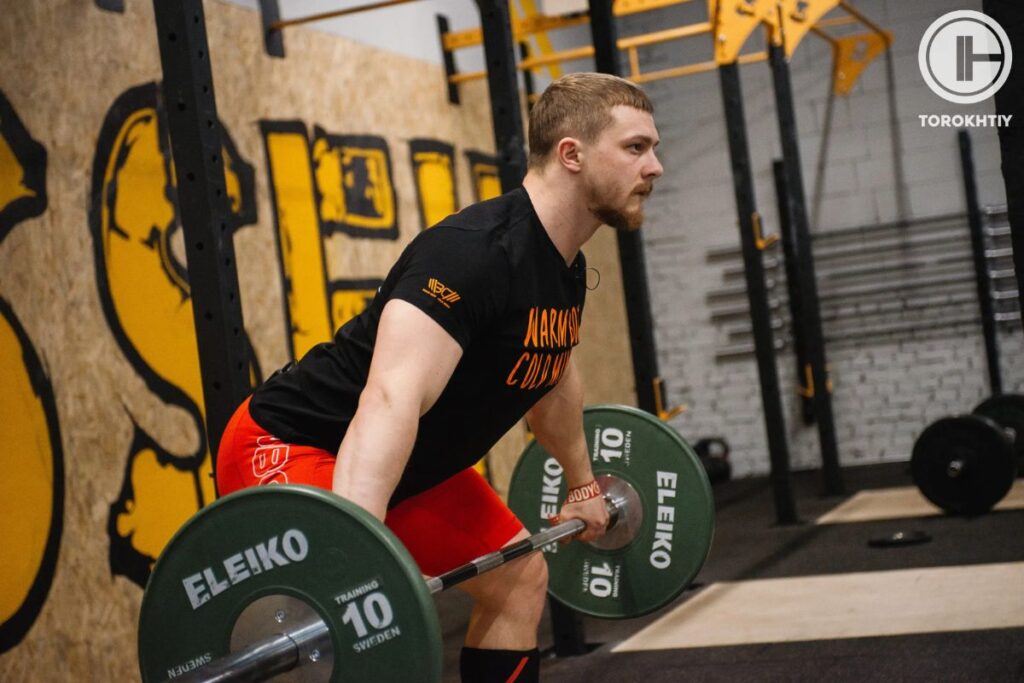
Who needs a high-pull?
Any athlete that wants to increase squat snatch or be more explosive and strong should practice this drill. No matter your level of weightlifting proficiency, the snatch high pull is a versatile tool for moving forward.
1. For Initial Training
To learn the second pull path & positions, beginners in Olympic weightlifting should do the high snatch pull.
2. For experienced athletes
The lack of force in the second pull might restrict progress in snatch. That is why using this pull variation is important as for technical mastery as far as speed and power development.
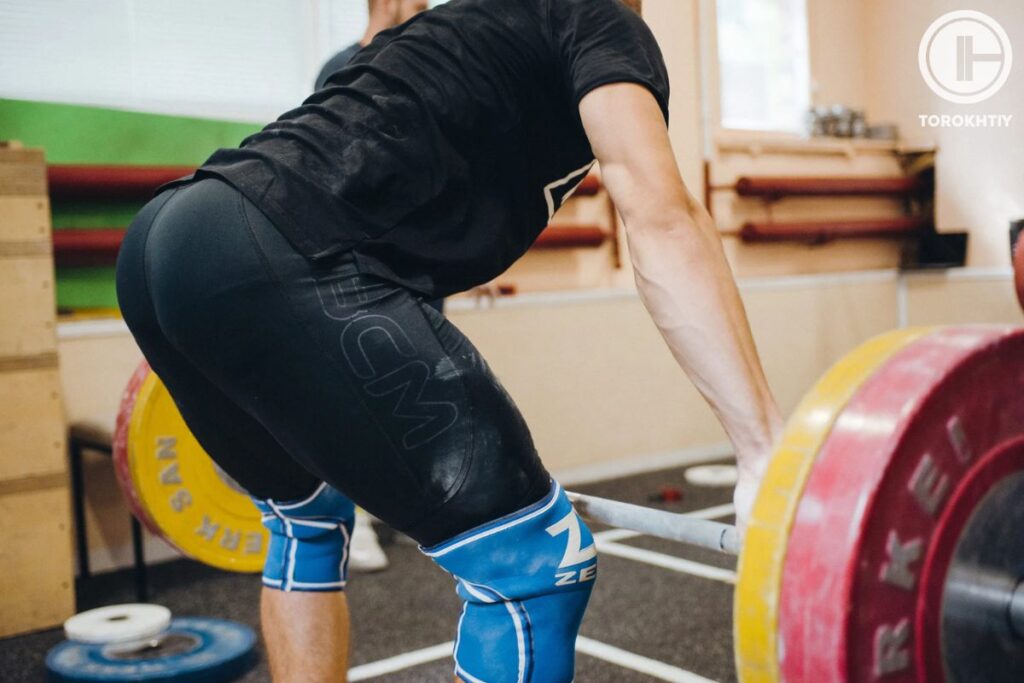
3. Athletes from other sports
For any track & field, basketball, tennis, or boxing athlete, strength training throughout the offseason is an essential component. Squats and deadlifts are the basic exercises that all of these athletes perform, although the snatch high pull is more efficient than just deadlift. In terms of muscular control, coordination, and explosive strength, it is significantly more functional. Also it is possible to use way lighter weights and lower risk of injury from overtraining because of the difficulty of this exercise.
4. Fitness athletes
In order to get ready for a weightlifting/snatch WOD, CF athletes should incorporate the high pull in their programs. In fitness, the goal of the snatch is often to squeeze the most reps into the quickest amount of time. Your WOD performance will be more effective and productive if you practice your snatch pull techniques.
Why Trust Us?
With over 20 years in Olympic Weightlifting, our team does its best to provide the audience with ultimate support and meet the needs and requirements of advanced athletes and professional lifters, as well as people who strive to open new opportunities and develop their physical capabilities with us.
By trusting the recommendations of our certified experts in coaching, nutrition, dietology, and sports training programming, as well as scientific consultants, and physiotherapists, we provide you with thorough, well-considered, and scientifically proven content. All the information given in the articles concerning workout programming, separate exercises, and athletic performance, in general, is based on verified data. We ensure that you can rely on our professionals’ pieces of advice and recommendations that can be treated as personalized ones which will benefit you and fully meet your needs.
The product testing process is described in more detail here
Author: Oleksiy Torokhtiy
Olympic Weightlifting Champion
Best Results: Snatch – 200 kg,
C&J – 240 kg
Oleksiy Torokhtiy is a professional athlete boasting 20 years of experience in Olympic weightlifting. With multiple European and World titles under his belt, he has showcased his prowess in two Olympic Games (Beijing 2008 and London 2012). Upon concluding his illustrious career, Oleksiy dedicated himself to coaching. By 2022, he had conducted over 200 weightlifting seminars worldwide. He is the visionary behind an international sportswear and accessories brand known for its motto, “Warm Body Cold Mind.” Additionally, he is an esteemed author and the creator of a series of training programs and eBooks.


